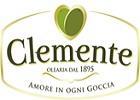
|
||||||||||||||||||||||||||||||||||||||||||||||||
|
||||||||||||||||||||||||||||||||||||||||||||||||
|
|
Taranto
The coast of Taranto spans over 140 km, with a diverse and beautiful natural landscape: wild areas with sheer cliffs, long stretches of fine sandy beaches that blend with the deep blue sea and the green maquis, in some places completely deserted, in others enlivened by quaint seaside resorts. In many areas the famous trulliare are visible, typical Apulian cone-shaped buildings. Many farmhouses have been restored and today can accomodate important farming and winery activities, attesting to the long tradition of Puglia in the production of excellent products, such as olive oil and wine. A varied landscape, a mosaic of different natural environments harmoniously combined where over the centuries different cultures have settled and left important traces of their presence: churches, castles, palaces, ruins of ancient civilizations contribute to the rich cultural heritage of Taranto and its territory. A history also to be found in the folklore that enlivens the festivals, popular and religious, that are celebrated all over the year, many of which are dedicated to the ancient crafts still practiced today in small workshops. "City of the Two Seas", this is how Taranto is called, located on a spit of land that separates the open sea, known as mar Grande, from the mar Piccolo. The artificial channel that connects them is surmounted by the famous swing bridge, beyond which lies the heart of the old Taranto, an ancient medieval town with the Cathedral of San Cataldo, the Aragonese Castle, also known as Castel Sant'Angelo, and many other monuments that tell the story of its ancient origins. The city of two seas, but also the city with two faces, because beyond the bridge, progress and modernity have designed the new Taranto, a city developed around the nineteenth-century village facing the waterway. Housed in the former Convent of San Pasquale Alcantarini, the Museo Archeologico Nazionale is famous for the rich collection of rare finds it displays. Along the coast there are many lovely places to enjoy a holiday of relaxation and fun diving into the crystal clear waters of the Ionian and enjoying the sun lying on the fine white sand of the long coastlines. To the north of Taranto, Marina di Ginosa, a small jewel of nature where the transparent water of the sea reflects the blue of the sky and the green of the pine forests. Near the Salento is located Marina di Pulsano, where low cliffs, white inlets and clear waters offer visitors a truly beautiful landscape. To the south of the province capital, another charming area, Marina di Leporano, is perfect for those who prefer a jagged coastline with cliffs interrupted by small sandy beaches. The sea, though beautiful, is not the only attraction of this land. An extraordinary landscape makes up the beautiful hinterland of Taranto: sometimes green and lush with large vineyards and olive groves, sometimes rocky and rough with ravines, caves and gorges where ancient civilizations had their settlements. In Massafra, the Gravie (ravines) of San Marco and La Scala are a dense network of paths, slopes, caves and places of worship around which the modern part of the town was built. The ravine of Laterza, 12 km long, is of a considerable size and has historical importance showing the ancient origins of this town. "City of many caves”, so it is called Grottaglie, an ancient village whose first settlements date back to the first century AD, famous worldwide for its handmade pottery, a craft that has its roots in ancient times. The ancient farms became in the Middle Ages the spearhead of the local agricultural development. They are scattered all over the Apulian territory, but around Crispiano there are some 100 and this has earned this city the nickname "city of the 100 farms." Remarkable also the presence of prehistoric ruins, including the Villaggio di Triglie. Castellaneta lies in the heart of the Parco delle Gravine, a mix of natural environments even more evocative due to the remains of an ancient history. North of Taranto, Martina Franca is a charming town overlooking the Itria Valley, with a lush green nature broken by the white trulli and ancient farms that frame the baroque architecture of the old town. The desire to rediscover the taste for things made following the teachings of tradition has grown significantly in recent years. Hence, the idea of "routes" dedicated to the discovery of authentic flavours and traditional crafts. In the Taranto province there are many routes to discover the finest wines and olive oils with a quality appellation or the art of ceramics that has made this land famous. The many landscapes in this area of Apulia offer the possibility of organizing very interesting excursions. An interesting destination for lovers of photography and bird watching is the Lake of Salinella near Marina Ginosa, where pine forests, clearings and sandy areas are home to a rich variety of wildlife and birds. Immersed in the beautiful scenery of Riva dei Tessali, lapped by the clear waters of the Ionian, golf enthusiasts find the ideal places to practice this sport. The gastronomy of the province of Taranto is characterized by a twofold tradition that makes it complete and captivating: the maritime and the rural of the hinterland. The crops in the hinterland provide excellent raw material for dishes based on vegetables and legumes, also excellent combined with fish. And finally, a wide variety of very sweet fruit: grapes, oranges, and the famous clementines of the Gulf of Taranto.
Source:Minister for Regional Affairs-Sport & Tourism. |

|
||||||||||||||||||||||||||||||||||||||||||||||
|
||||||||||||||||||||||||||||||||||||||||||||||||



